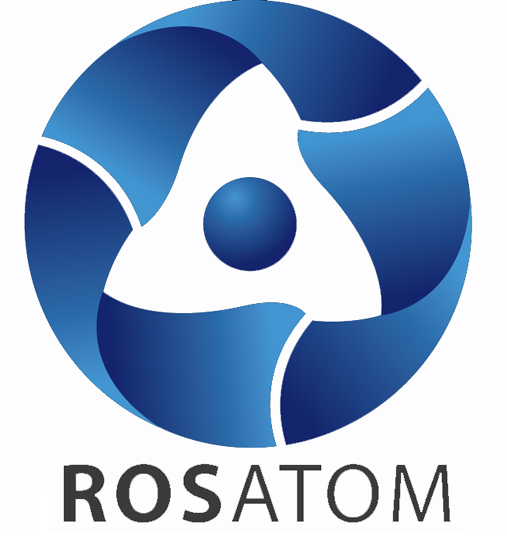Rosatom and the government of Primorsky Krai on the Pacific Coast of Russia have signed an agreement for a feasibility study and location options for floating nuclear power units off its coast.
The agreement was signed at the Atomexpo 2024 event in Sochi. It aims to produce reliable and carbon-free electricity in the region, which borders China and North Korea and is about 250 miles west of Japan.
Rosatom said the agreement will also include the financial, economic, legal and technical aspects necessary for a prospective project, as well as how it would be organized. It is estimated by the country’s Unified Energy System operator that the Far Eastern region of Russia will need at least one billion three hundred and fifty megawatts of power by 2030.
Andrei Leontyev is the Minister of Energy and Gas Supply of the Primorsky Territory. He said, “Initially, we see the need for four floating power units to eliminate the energy shortage in the south … in addition to small-scale nuclear energy, we also consider it necessary to create a nuclear power plant with two 600 MW units in the medium term for the development of our region.”
Andrey Nikipelov is the Rosatom Deputy Director General for Mechanical Engineering and Industrial Solutions. He said, “Small-scale nuclear power is a modern green way of stable energy supply with energy costs projected for decades … floating power units with their mobility and scalability are a doubly flexible solution not only to cover the current needs of a region with actively developing industry and infrastructure, but also new opportunities that will further expand the economic potential of the region and provide better living conditions for people.”
Rosatom has developed floating nuclear power plants based on the RITM-200 reactor. This reactor has been used on Russia’s new fleet of nuclear-powered icebreakers. Construction has begun for units to supply the Baimsky Mining and Processing Plant, with “dozens of countries and region” showing an interest. It says that there is a need for up to fifteen floating nuclear power units for Russia’s Arctic zone.
Russia already has one floating nuclear power plant named the Akademik Lomonosov (AL). The AL is currently stationed at Pevek where it supplies heat and power to the town. Two KLT-40S reactors generating thirty-five megawatts each are supplying the power. The KLT-40S are similar to those used in a previous generation of nuclear-powered icebreakers.
Rosatom also signed an agreement with Russia’s TSS Group at the Atomexpo forum. The agreement spelled out terms for the formation of a joint venture for the construction and operation of floating nuclear power units for foreign markets.
The floating power plants will contain RITM-200 reactors and have a capacity of one hundred megawatts and a service life of at least sixty years.
Sergei Velichko is the Chairman of TSS Group. He said, “Floating power units are an effective solution to the problems of current and future energy shortages in regions with rapidly developing economies … we see high demand for a stable and green source of energy in almost all countries in Africa and the Middle East … we believe that the largest sovereign funds will be serious drivers of investment in this technology.”
Author: Burt Webb
-

Nuclear Reactors 1363 – Russia Building Floating Nuclear Power Plants For Russian Pacific Coast
-
Nuclear News Roundup March 29, 2024
Non-Proliferation Experts Urge US to Not Support Nuclear Fuel Project usnews.com
DOE Study Finds Replacing Coal Plants with Nuclear Plants Could Bring Hundreds More Local Jobs and Millions in Added Income and Revenue to Energy Communities thecheyennepost.com
Russian Nuclear Submarine Fires Missiles newsweek.com
Holy See: ‘Nuclear deterrence is an illusion’ vaticannews.va
-

Geiger Readings for March 29, 2024
Ambient office = 91 nanosieverts per hour
Ambient outside = 122 nanosieverts per hour
Soil exposed to rain water = 120 nanosieverts per hour
Tomato from Central Market = 127 nanosieverts per hour
Tap water = 78 nanosieverts per hour
Filter water = 66 nanosieverts per hour
-

Nuclear Reactors 1362 – Czech Companies Working On A Pipeline To Carry Heat From Nuclear Power Plant To A Major City
Czech nuclear power operator ČEZ and municipal heating company Teplárny Brno have signed agreements with regard to a twenty-six-mile pipeline from the Dukovany nuclear power plant to benefit two hundred and fifty thousand people in the city of Brno.
The strategic contracts signed cover the transport of heat from the Dukovany units to the boundary of the power plant according to ČEZ. In addition, they cover agreement on future contracts which are a condition for steps towards the construction of the heating pipe. Work is scheduled to begin in 2027 and due to take about four years.
The companies say that the cogeneration production of heat will help Brno, the Czech Republic’s second largest city, to cut its use of natural gas. The transport of heat from Dukovany will cover about fifty percent 50% of its heating needs. The pipeline is being designed to avoid built-up areas. It will have tunneled sections, including one stretch of 3600 feet in the Bobrava Nature Park.
The projected cost of the plan is eight hundred and eleven million dollars with part of the cost to be met by possible European Union subsidies as well as possible financing from commercial institutions.
Petr Fiala is the Czech Prime Minister. He said, “The construction of the heat pipe is an important step towards energy self-sufficiency and independence for Brno. If we have been saying for a long time that the basic energy source of the Czech Republic should be nuclear energy in the future, then this project fully meets the requirements and criteria. We will use the heat from the nuclear power plant, we will get rid of dependence on other fuels and we will ensure safe supply of heat to households and institutions.”
Daniel Benes is the ČEZ CEO. He said that he was glad the project was moving forward, adding, “South Bohemia and our Temelín nuclear power plant, which uses a new heat pipe to supply heat to České Budějovice, can be an example of good practice in the use of nuclear sources for heat production.”
Jiří Herman is the chairman of the board of Teplárny HeBrno. He said the project will provide more stability for heating prices for Brno. “This will fundamentally reduce the sensitivity of the price of heat to fluctuations in energy prices. Even if we consider the price of heat after 2030, the calculations show us that compared with the current price level, we can expect a positive impact – a reduction – on the price of heat.”
Four VVER-440 units are currently in operation at the Dukovany site. The site began operating between 1985 and 1987. Two VVER-1000 units are currently in operation at Temelín, which came into operation in 2000 and 2002.
The prime minister made a visit to the plant earlier this week for the announcement. He also held meetings with mayors of nearby towns and villages about plans for new nuclear power capacity at Dukovany. Fiala noted that five hundred million dollars of transport measures and said the aim was to minimize any negative impacts on the area during construction of the new reactors. -
Nuclear News Roundup March 28, 2024
Kentucky governor vetoes nuclear energy legislation due to the method of selecting board members wandtv.com
Report calls for nuclear power plant safety measures to consider future weather threats krmg.com
Palisades “work family” reunites for shot at reopening a Michigan nuclear plant greatlakessnow.org
Nuclear Submarine Pact Could Deter China From Taiwan Attack newsweek.com
-

Geiger Readings for March 28, 2024
Ambient office = 119 nanosieverts per hour
Ambient outside = 108 nanosieverts per hour
Soil exposed to rain water = 107 nanosieverts per hour
Red bell pepper from Central Market102 nanosieverts per hour
Tap water = 87 nanosieverts per hour
Filter water = 80 nanosieverts per hour
-

Nuclear Reactors 1361 – Korean Atomic Energy Research Institute Working On New Fuel For Advanced Research Reactors
The Korea Atomic Energy Research Institute’s (KAERI) successful irradiation tests and positive inspection of high-density uranium silicide fuel indicate potential for high-enriched uranium to low-enriched uranium conversion of high-performance research reactors. It is aiming to bolster international nuclear non-proliferation efforts upon commercialization by reducing the use of high-enriched uranium (HEU).
KAERI worked with a plate-type uranium silicide fuel, with a high uranium density designed for research reactors. It has successfully completed irradiation tests and visual inspections. The uranium density of the test fuel is five point three grams per cubic centimeters, which is about ten percent higher than that of the current fuel in use. The visual inspection of the irradiated materials yielded positive observations.
Most material testing reactor (MTR) fuel assemblies utilize fuel plates with a uranium density of four point eight grams per cubic centimeter. The development of higher uranium-density fuels has become critical for high-performance research reactors. This research supports the conversion from HEU fuel to low-enriched uranium (LEU) fuel in the USA and Europe. KAERI initiated research and development on these high uranium-density silicide fuels in 2020. They focused on fuel plates with densities up to five point three grams per cubic centimeter.
For the fuel intended for use in high-performance research reactors, KAERI developed uranium silicide (U3Si2) spherical-particle powder using the atomization method. It has utilized it for the development of various research reactor fuels. KAERI is involved in the high-density atomized LEU U3Si2 MTR fuel qualification campaign. The campaign is known as the ‘KAERI High-Density Atomized Silicide Fuel Qualification Irradiation Project (KIMQI) Fuel Qualification Project of High-Density Atomized Silicide Fuel.’ The Belgium’s Nuclear Research Centre (SCK-CEN) was part of the collaboration.
The qualification campaign, which began in 2021, consists of two phases. First, the KIMQI-FUTURE test, which ran from 2021 to 2023 to confirm basic performance. Second, the KIMQI-GTA (Generic Test Assembly) to evaluate performance under high heat flux and high burnup conditions. The KIMQI-GTA irradiation procedure was recently completed, achieving a peak heat flux of four hundred and seventy watts per square centimeter and a peak local burnup that reached seventy four percent of the initial fissile content. The visual inspection results showed that no abnormal conditions were experienced during the irradiation test. This fact is a positive indicator for the potential use of the developed high-density fuel in high-performance research reactors. The final qualification report included Post-Irradiation Examination (PIE) test results. The report is expected to be available by the end of 2025.
Once this technology is commercialized, it will enable the replacement of HEU with LEU in high-performance research reactors. This will significantly contribute to the international nuclear non-proliferation effort.
In December of 2022, KAERI signed a memorandum of understanding (MoU) with Poland’s National Centre for Nuclear Research. The MoU was an agreement to supply nuclear fuel for Poland’s research reactor MARIA using high-density low-enriched uranium U3Si2 plate-shaped nuclear fuel manufacturing technology. The MoU focuses on the South Korean institute interest in supplying test fuels to MARIA for the qualification of nuclear fuel supply. -

Geiger Readings for March 27, 2024
Ambient office = 100 nanosieverts per hour
Ambient outside = 122 nanosieverts per hour
Soil exposed to rain water = 115 nanosieverts per hour
Green onion from Central Market = 87 nanosieverts per hour
Tap water = 103 nanosieverts per hour
Filter water = 95 nanosieverts per hour
-
Nuclear News Roundup March 27, 2024
South Korean Researchers Set New Record At KSTAR Reactor nucnet.org
Energoatom: Zaporizhzhia nuclear plant ‘on verge of blackout’ after recent Russian attack yahoo.com
Company behind New Jersey’s 3 nuclear plants to seek 20-year approval to continue operations foxnews.com
Power industry urges Serbia to abolish nuclear moratorium balkangreenenergynews.com
-

Nuclear Reactors 1360 – U.K. Prime Minister Announces Two Hundred Sixty Million Dollar Grant For Barrow-in-Furness
Rishi Sunak is the Prime Minister of the United Kingdom. He will declare a “critical national endeavor” as he unveils a two hundred-and fifty-two-million-dollar package of investment aimed at securing the future of the U.K.’s nuclear industry and boosting jobs.
The Prime Minister will introduce a new fund backed by twenty-five million dollars a year in public money for the next decade to support growth in Barrow-in-Furness. It is the Cumbrian town that is home to Britain’s Astute class submarines and forthcoming Dreadnought program.
Sunak says that the money will provide grants to local organizations and improvements to transport and health projects in the area.
The nuclear industry in the U.K. is expected to require fifty percent more skilled workers in the next decade as it becomes more central to UK energy and national security.
Sunak’s announcement comes amid concerns about the U.K.’s level of defense spending as two serving ministers have urged Sunak to increase defense spending to at least two and a half percent of GDP. They advocate this increased defense spending in the face of escalating Russian aggression and concerns about stability in the Middle East.
There was no increase of defense spending in the spring budget as chancellor Jeremy Hunt told MPs, “Our spending will rise to 2.5 per cent [of GDP] as soon as economic conditions allow,” without detailing how that would happen.
Defense Secretary Grant Shapps has also admitted that he’d like to see a “bigger budget” from the current level of just over two percent and he called for military spending to be increased to three percent of GDP.
Sunak has said the government has already announced the largest sustained increase in defense spending since the Cold War. He added that the budget was “recently topped up with billions of pounds to strengthen our nuclear enterprise and rebuild stockpiles.”
Today’s announcement also includes a significant infusion of cash from industry leaders including BAE Systems, Rolls-Royce, EDF and Babcock. They will be investing 960m million dollars between them in skills, jobs and education.
Before a visit to Barrow-in-Furness on Monday, the Prime Minister said, “Safeguarding the future of our nuclear deterrent and nuclear energy industry is a critical national endeavor. “In a more dangerous and contested world, the UK’s continuous at-sea nuclear deterrent is more vital than ever. And nuclear delivers cheaper, cleaner homegrown energy for consumers.”
He added, “That’s why we are investing in Barrow, the home of UK submarines, and in the jobs and skills of the future in the thriving British nuclear industry. Today we usher in the next generation of our nuclear enterprise, which will keep us safe, keep our energy secure, and keep our bills down for good.”
Nuclear industry leaders have welcomed the plans. Charles Woodburn is the CEO of BAE Systems. He said, “Barrow is at the heart of the UK’s submarine enterprise and as the custodian of our submarine design and build capability, we’re incredibly proud of the role we play in the Astute, Dreadnought and now SSN-AUKUS program.”
David Lockwood is the CEO of Babcock International. He said the measures were a “fantastic opportunity for the UK to deliver a stronger nuclear industry that will contribute to the resilience of the UK’s independent deterrent and will support the UK’s energy security ambitions and net zero targets.”
